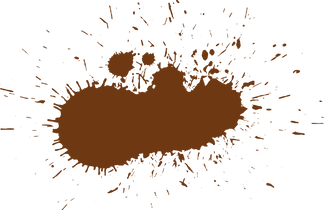
This image has format transparent PNG with resolution 324x210.
You can download this image in best resolution from this page and use it for design and web design.
Mud PNG with transparent background you can download for free, just click on download button.
Mud is a liquid or semi-liquid mixture of water and any combination of different kinds of soil (loam, silt, and clay). It usually forms after rainfall or near water sources. Ancient mud deposits harden over geological time to form sedimentary rock such as shale or mudstone (generally called lutites). When geological deposits of mud are formed in estuaries, the resultant layers are termed bay muds.
In the construction industry, mud is a semi-fluid material that can be used to coat, seal, or adhere materials. Depending on the composition of the mud, it can be referred by many different names, including slurry, mortar, plaster, stucco, and concrete.
Mud, cob, adobe, clay, and many other names are historically used synonymously to mean a mixture of subsoil and water possibly with the addition of stones, gravel, straw, lime, and/or bitumen. This material was used a variety of ways to build walls, floors and even roofs. For thousands of years it was common in most parts of the world to build walls using mudbricks or the wattle and daub, rammed earth or cob techniques and cover the surfaces with earthen plaster.
Mud can be made into mud bricks, also called adobe, by mixing mud with water, placing the mixture into moulds and then allowing it to dry in open air. Straw is sometimes used as a binder within the bricks, as it adds a support lattice. When the brick would otherwise break, the straw will redistribute the force throughout the brick, decreasing the chance of breakage. Such buildings must be protected from groundwater, usually by building upon a masonry, fired brick, rock or rubble foundation, and also from wind-driven rain in damp climates, usually by deep roof overhangs. In extremely dry climates a well drained flat roof may be protected with a well-prepared (puddled) and properly maintained dried mud coating, viable as the mud will expand when moistened and so become more water resistant. Adobe mudbricks were commonly used by the Pueblo Indians to build their homes and other necessary structures.
Mud can provide a home for numerous types of animals, including varieties of worms, frogs, snails, clams, and crayfish. Other animals, such as hippopotamuses, pigs, rhinoceroses, water buffalo and elephants, bathe in mud in order to cool off and protect themselves from the sun. Submerged mud can be home to larvae of various insects.
There are numerous dysphemisms for poor-tasting food such as "tastes like dirt". Kava tea is often described this way, as it is bitter, brown, and contains sediments.
There also exist children's recipes for "mud", which is generally a chocolate or cornstarch-based sludge used more for visual appeal than actual taste. Never does this confectionery mud actually contain real mud.
Mud bogging is a form of off-road motorsport popular in Canada and the United States in which the goal is to drive a vehicle through a pit of mud or a track of a set length. Winners are determined by the distance traveled through the pit. However, if several vehicles are able to travel the entire length, the time taken to traverse the pit will determine the winner.
Mud runs are a popular activity involving mud. Participants run a distance of 3 miles to as long as 10 miles, while crawling through mud bogs, and battling other obstacles.
In this PNG clipart you can download free PNG images: Mud PNG images free download